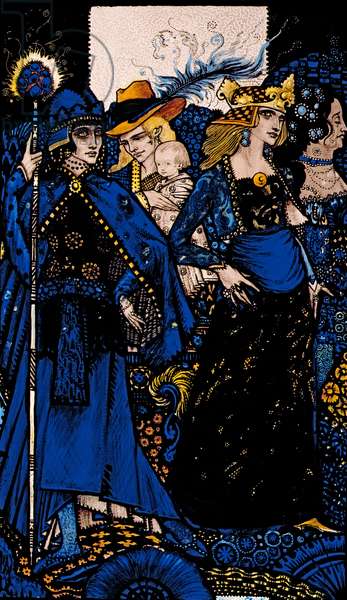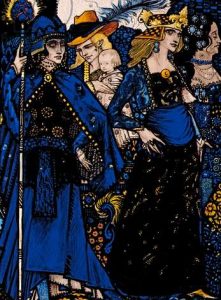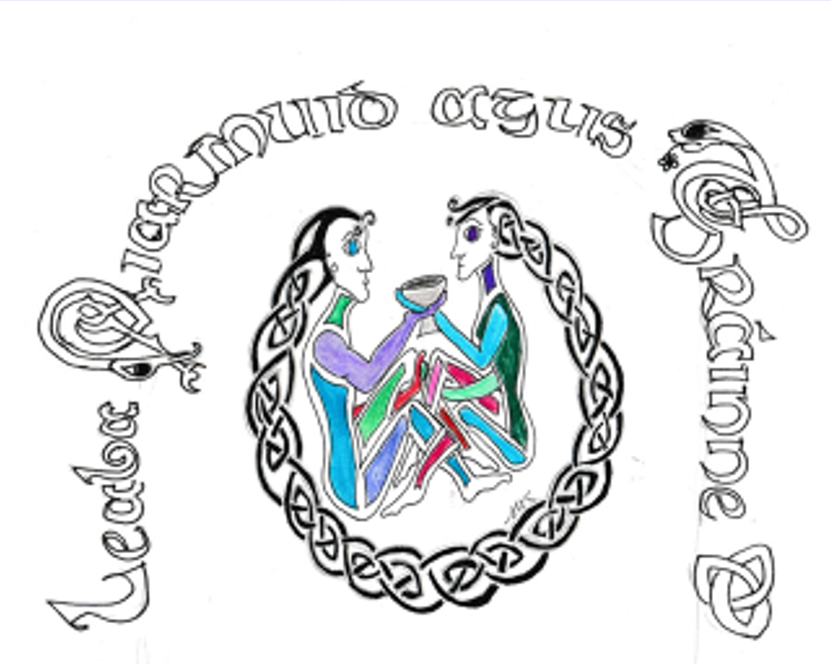by Hilary Kiely
The old year may technically end when the clock strikes midnight on the first day of January, the Christmas season does not officially end until six days later. Known variously as the Feast of the Epiphany, Three Kings Day, and Twelfth Night, in Ireland the 6th of January has also traditionally been known as Little Christmas and Nollaig na mBan or Women’s Christmas.

This is the end of the twelve days of Christmas. It is called “Nodlag na mBan” or “The Women’s Christmas” Candles are lit on Little Christmas Night and again on the following night. On Little Christmas Night it is the custom to bring in an extra bucket of water in memory of the Wedding feast of Cana. (The Schools’ Collection, Volume 0290, Page 132)
What to eat:
Traditionally, Women’s Christmas is a day where women gather to celebrate, at each other’s homes or perhaps down the pub. Taking advantage of the last of the 12 Days of Christmas to partake in special food and drink before returning to the “plain fare” of the remainder of the year. women would have been able to leave their homes and children in the care of the men of the house.
While for some women, apparently the celebration amounted to finishing whatever sweets and cakes were left over at the end of the feasting season. Others however will have prepared special foods for the occasion or gone out to eat. Kevin Danaher, in The Year in Ireland: Irish Calendar Customs describes a Nollaig na Mban fare as “thinly-cut sandwiches, scones, gingerbread, apple cakes, sponge cakes decorated with swirls of icing, plum cake, brown bread, soda bread, baker’s bread, pats of freshly made butter, bowls of cream, dishes of jam and preserves and the best quality tea.” (p 263) The tradition of Women’s Christmas trailed off in many parts of the country during the Famine years. However,it has made a comeback in recent years across the island. In Cork, especially, it seems to have been carried on with greater continuity than anywhere else in Ireland.
Preparing for Christmas
Women will certainly have earned a bit of time off from the household chores. Danaher relates also the preparation that went before the Christmas:
“… sweeping, washing and cleaning. A major laundering operation included all washable garments and household linen. Tables and chairs were scrubbed with sand, while pots, pans, and delf [sic] were scoured. . . . Christmas Eve was spent mainly on the last preparations for the festival, in the final sweeping and cleaning and, especially in preparing the festive food for the next day’s dinner. . . . On returning from church [on Christmas Day] the womenfolk busied themselves with cooking the Christmas dinner while the men and boys remained out of doors, usually taking part in some sport or pastime. . . . The Christmas dinner was the biggest and most elaborate meal of the year and the housewife took pride in setting a generous table before appetites sharpened by hurling or hunting.” (233-44)
In many homes a large and abundant feast would also have prepared for New Year’s Day. This was believed that this would protect the household from want in the coming year. More especially after the deprivations of the Famine. After two big feasts and much visiting house to house, where food and drink would need to be provided to all comers, a respite from the daily chores and a chance to relax would have been more than welcome.
So raise a glass or cup of tea with your friends, light a candle, and leave a bucket of fresh water by the door to round out your Christmas celebrations on the 6th of January and toast to the women of Ireland, past, present, and future.
(A quick note to mention that the image used here is an illustration by Irish artist Harry Clarke who sadly dies young on this date in 1931 in Switzerland of tuberculosis.)
For more, see “The roots and traditions of Nollaig na mBan” by Marion McGarry at RTÉ’s Brainstorm
Further Reading:
Mary Burke “Forgotten Remembrances: The 6 January “Women’s Christmas” ( Nollaig na mBan ) and the 6 January 1839 “Night of the Big Wind” ( Oíche na Gaoithe Móire ) in “The Dead” ” in James Joyce Quarterly, Volume 54, Number 3-4, Spring-Summer 2017, pp. 241-274
Stephanie Byrne & Kathleen Farrell (2021) An investigation into the food related traditions associated with the Christmas period in Rural Ireland, Folk Life, 59:2, 123-140
Kevin Danaher, The Year in Ireland: Irish Calendar Customs (Dublin: Mercier Press, 1972)


